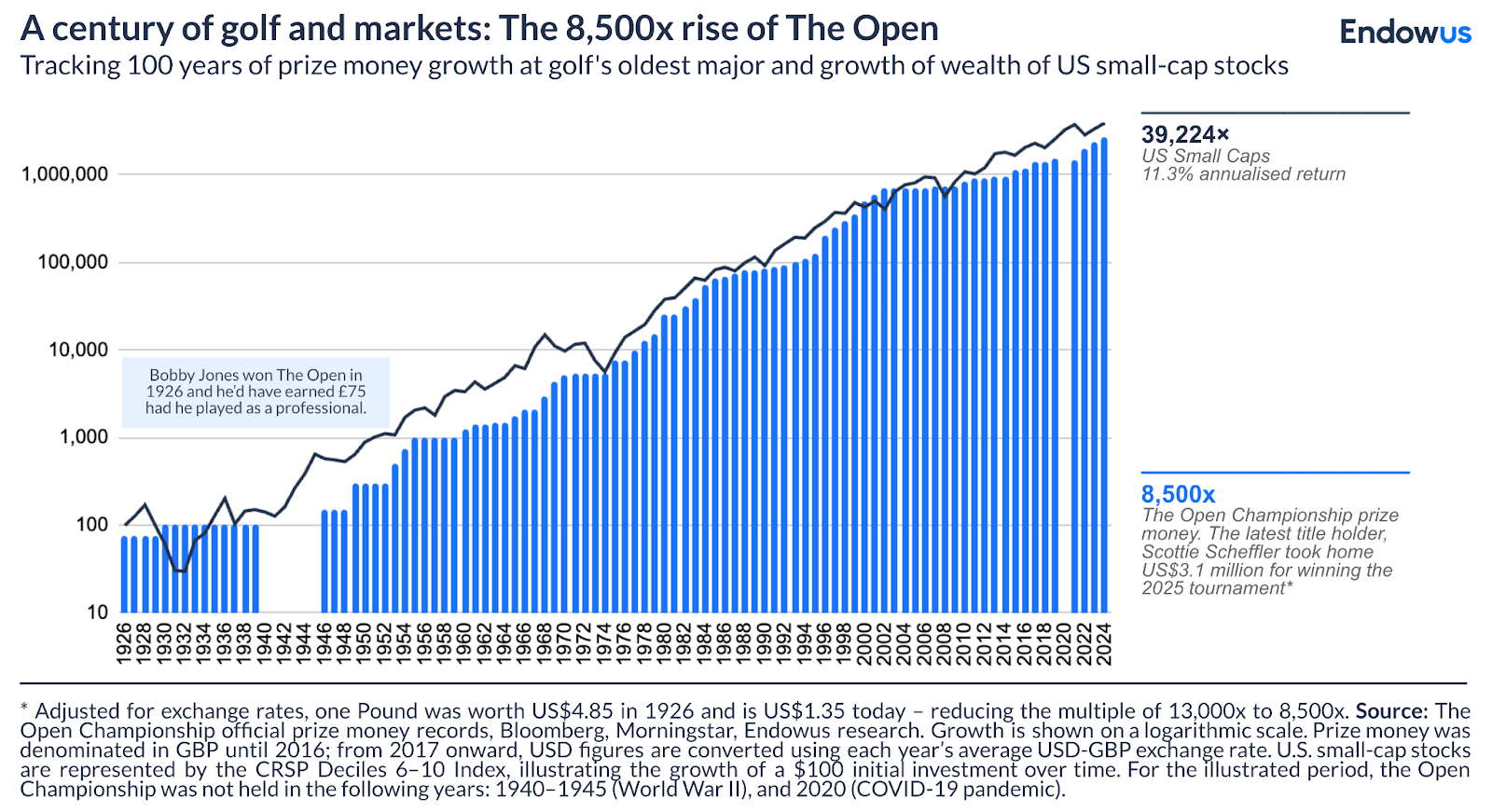Register for the event
Endowus invites you to our exclusive event with Macquarie Asset Management, as we discuss unlocking opportunities in Infrastructure- a $1.3tn asset class.
This event is reserved for Accredited Investors (AIs) only. To register for the event, please indicate one of the following:
- What does golf teach us about investing? Endowus’ CEO, Gregory Van, reflects on his experiences.
- Making choices on the course requires one to strike a careful balance between risks and rewards.
- Emotions often impact the outcome. Ultimately, golfers and investors alike are always playing against themselves.
The original version of this article first appeared in The Business Times.
On the surface, golf might seem a world apart from financial markets. Yet, as a keen observer of both, I have come to appreciate the striking parallels that offer invaluable lessons for anyone seeking to build lasting wealth.
The 153rd Open Championship, the oldest golf tournament in the world, wrapped up this past weekend at Royal Portrush on the coast of Northern Ireland. It was exciting to see world number one Scottie Scheffler and Li Haotong, a rare occurrence to see a Chinese golfer, in the final grouping. Scottie’s win by a healthy margin is, of course, impressive, but what got me was that he went 32 holes bogey-free, showing his consistency and dominance under pressure. For non-golfers, bogey-free means finishing all of those holes at par or better.
I was curious and looked up the compounding of reward money over the past 100 years. In 1926, the famous Bobby Jones – lawyer by trade, golfer by passion – won for the first time. As a career amateur, he wasn’t entitled to any prize money, so the whopping GBP 75 was awarded to the runner-up.
Fast forward to 2025, Scottie took home US$3.1 million of the total purse of US$17 million for the tournament. This multiple of growth seems mindblowing at almost 31,000x — adjusted for exchange rates, one Pound was worth US$4.85 in 1926 and is US$1.35 today — reducing the multiple to 8,500x, which still sounds high, but only translates to about 9.5%, similar to the historical track record of equities.

Returning to golf with a new set of eyes
I played competitively as a junior, and with my own kids reaching an age to start swinging, I have been fortunate to have the chance to get back on the course.
Playing as an adult has brought on a whole new appreciation for the mental side of the game – the risk-reward trade-offs, the need to make decisions and live with them, the pressure, the choice of equipment, and so many other nuances draw parallels to evidence-based investing.
Staying on course by taking appropriate amounts of risk for return
In golf, you are constantly faced with choices. From tee to green, you need to pick the line, shot, trajectory, taking into account bunkers, water, out of bounds, rough, wind, rain, emotions, what your competitor just did, and the world around you. You could carry that water to try to get on the green in two, or lay up with a surer chance of making par.
Investing presents the same choices. You could take on lots of risk for the chance of making a big short-term return, but you could also catch a bad swing and end up in a ditch.
The astute investor begins by picking the right "shot" for each of their goals. This isn't about chasing the latest market fad; it's about crafting a well-thought-out investment strategy and asset allocation that aligns with your unique goals, time horizon, and risk tolerance. Do you need a conservative iron shot to lay up, or can you confidently unleash the driver for a long-term gain and take on the volatility?
Understanding your personal "course conditions" and making strategic choices before you swing is paramount to improving your probability for success, and knowing when to go for it or protect capital.









.webp)




%20(1).gif)
%20(1).jpg)